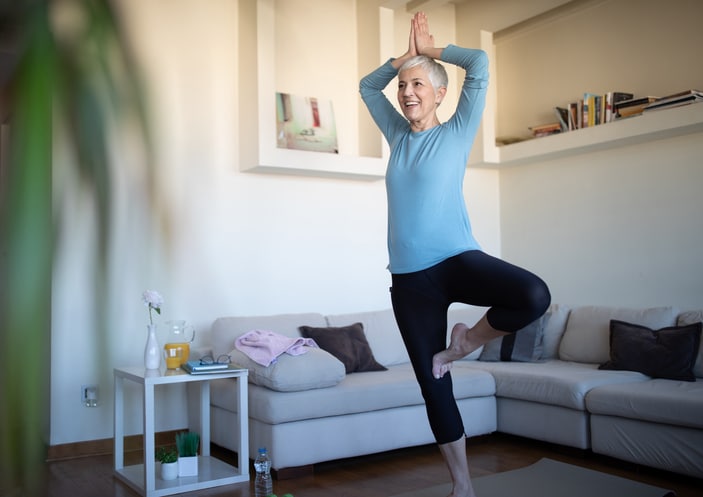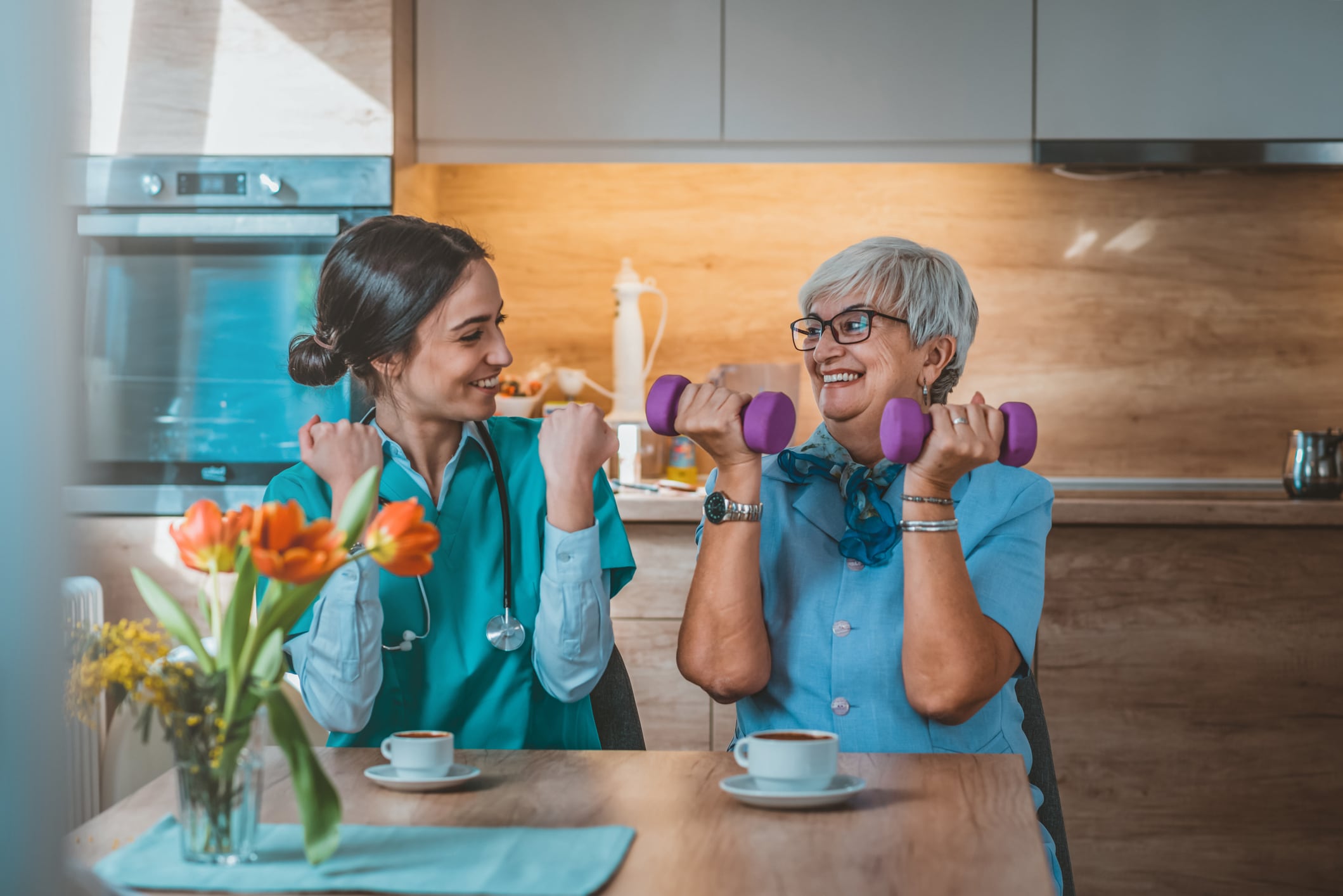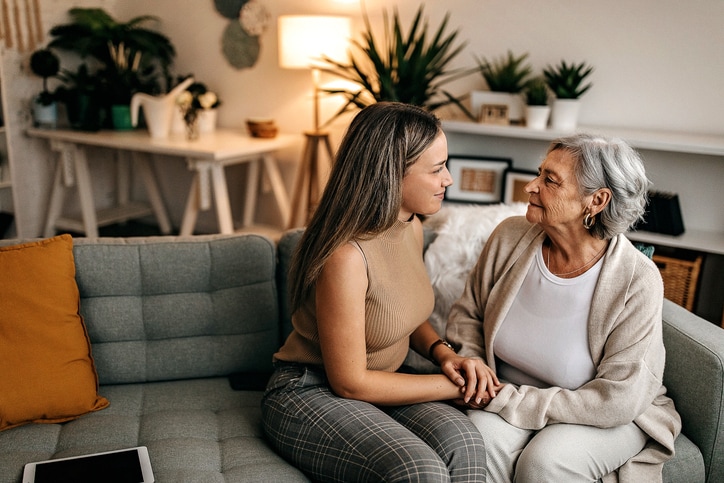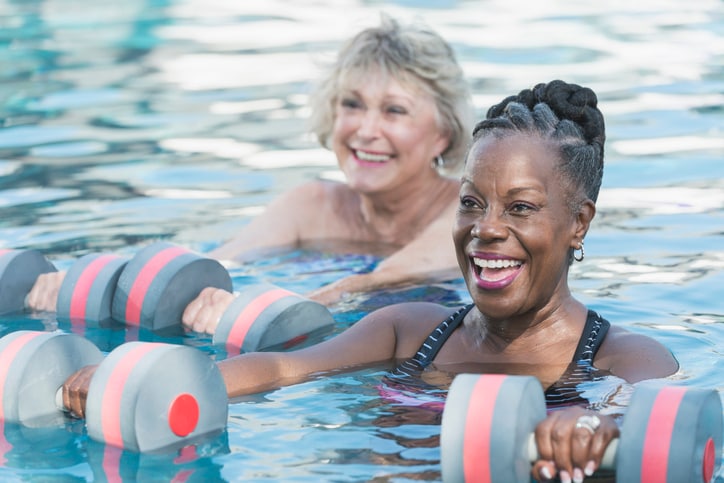It’s scary but true: Falls are the leading cause of injury for adults 65 and older, and as the Center for Disease Control and Prevention (CDC) notes, these incidents are “common, costly and preventable.”
One way to help prevent falls: Balance training for seniors. “Focusing on balance is so important for older adults because it helps reduce the risk of falls, which can result in serious injuries like broken bones or head trauma,” explains Dr. Raj Dasgupta, a quadruple board-certified physician and chief medical advisor for Garage Gym Reviews. “Improving balance also supports better coordination and mobility, which makes everyday tasks easier and helps maintain independence.”
Here, Dasgupta and other experts offer insight on balance and older adults, and share a list of balance exercises for seniors of varying ability levels.
Why do adults lose balance as they age?
Balance can become more challenging with age due to a few key factors, according to Dasgupta. “Muscle mass naturally decreases over time, leading to weaker muscles and less stability,” he explains. “Additionally, changes in vision, hearing and our sense of where we are in space (proprioception) can also come into play. And on top of that, the inner ear, which helps control balance, may not work as well, and our nervous system takes longer to respond to signals.”
Dementia can also affect balance, notes Dr. Meredith Bock, a board-certified neurologist and chief medical officer and Remo Health.
“Dementia can impact balance and mobility due to the damage it causes in different parts of the brain,” she explains. “Specifically, dementia can affect the areas that control movement, coordination and spatial awareness. This damage can disrupt the signals between the brain and the body, leading to balance problems.”
“I tell my patients all the time that it is important for them to work on balance, mobility and flexibility to prevent future falls.”
— Devin Trachman, clinic director, Physical Therapy Central
Why is it important for older adults to work on balance?
In addition to mitigating fall risk, balance training for seniors also helps maintain independence, notes Devin Trachman, a physical therapist clinic director at Physical Therapy Central in Edmond, Oklahoma.
“I tell my patients all the time that it is important for them to work on balance, mobility and flexibility to prevent future falls, maintain independence, enhance their functional performance, strength and coordination, compensate for other age-related changes and for better posture.”
Put another way: Good balance can vastly improve the overall quality of life in older adults.
Balance exercises for seniors
Whether you or an older loved one has solid balance or needs some work, check out these exercises for balance for seniors of varying ability levels.
Be sure to check with your doctor before beginning any new exercise program. A qualified trainer or physical therapist can also assist with exercising safely.
Balance exercises for seniors with good balance
1. Walk heel-to-toe
With this exercise, folks essentially pretend to walk on a balance beam.
“Walk in a forward direction, placing the heel of one foot directly in front of the toes of the other foot,” explains Dana Tress, a physical therapist with extensive training in balance disorders at Smith Physical Therapy + Running Academy in Crystal Lake, Illinois. “Travel 10-20 feet in this fashion. Instead of turning around, walk heel-to-toe in a backwards direction.”
2. Step up and balance
If you have stairs at home, use them as a place to work on your balance.
“As you go up your stairs, step up and try to balance for 2-3 seconds before placing your other foot on the next stair,” says Tress. “Use the railings for support as needed.”
3. Standing on one leg
As Trachman notes: 40% of a person’s walking cycle is spent on one leg. “If seniors can’t balance on a single leg, their strides are shorter and slower, creating a fall risk,” she says. “Practicing single-leg balances for 10 seconds can help minimize that possibility. In addition, single-leg balances strengthen the leg from the hip down to the ankle.”
4. Standing marches
Marches are another important exercise for working on balance because they require you to be on one leg at a time.
“To start, stand behind a chair in case you need support,” says Trachman. “The goal of this exercise is to lift your knees as high as possible without needing to grab the chair. Stand tall with your feet hip-width apart and engage your core muscles for stability. Begin by lifting one knee towards your chest while keeping your back straight. Lower your foot back to the ground and repeat with the opposite leg. Perform 12-15 reps for three sets.”
“If seniors can’t balance on a single leg, their strides are shorter and slower, creating a fall risk.”
— Devin Trachman
5. Hurdles
For this exercise, place an item four to six inches of height on the floor. (An empty tissue box or yoga block works.)
Per Tress: Face the obstacle and step over it, leading with the right foot. Step backwards over the obstacle leading with your left foot. Repeat 10-15 times. Then, change feet, leading with the left foot to step forward and right foot to step backwards.
“You can also stand next to the obstacle and step over it sideways with each foot,” she adds. “Then go back the other way. Always hold on for support if needed!”

Balance training for seniors with decent balance
6. Partial staggered stance
Start off with your feet together. Slide one foot forward so that the heel of one foot aligns with the ball of the other foot, so that you are almost standing heel-to-toe, but not quite. Try to hold this position for 10-15 seconds. Switch the position of your feet and try it again.
Repeat five to eight times on each side. Hold on for support as needed. “When this gets easy, you can try it on a soft surface, such as carpeting or a cushion/pillow,” notes Tress.
7. Reach up and downs
Another favorite balance exercise of Tress’s, start off with an object in both hands, such as a ball.
Reach up with the object as high as you can, like you are trying to put it on a top shelf. Then lower it down as close to the floor as you can. Repeat 10-15 times, slow and controlled.
8. Chair squats
Chair squats are a great way for older adults to strengthen their leg muscles, notes Trachman.
“Folks can practice standing up from a chair hands-free or doing squats daily,” she says. “It also makes other daily life activities easier, such as getting off the toilet or walking up and down the stairs.”
9. Standing heel raises
Heel raises are important for strengthening your calf muscles, notes Trachman, adding that these muscles control ankle stability, which is vital for walking without assistance and balance.
Lift your heels off the ground, raising onto the front of your foot. Perform three sets of 12-15 reps. For more of a challenge, do this exercise behind the chair without using your arms for assistance, she notes.
Balance exercises for seniors with poor balance
10. Stand and reach
To begin, stand up tall while facing a counter or table.
Per Trachman: Hold onto the counter or table for support as needed. With one or both hands, reach as far forward as you can and tap the counter/table. Return to standing.
Then, using your right hand, reach across your body and tap the counter as far to the left as you can. Repeat going to the right. Perform 10 reaches in each direction.
11. Sit to stand with head turns
“Sit on a firm chair with armrests,” says Tress. “Use the armrests as needed during this exercise.”
Stand up from the chair and turn your head to the right as you do so. Return to sitting using a controlled manner (no plopping!). Stand up again, turning head to the left this time. Return to sitting, using a controlled manner. Perform 10 times total.
12. Seated knee extensions
These exercises work primarily to strengthen the quadriceps muscle, notes Trachman, which is essential for stabilizing the knee and a very important piece of balancing.
To do: Sit in a chair. Extend your leg out straight in front of you. Return to the starting position. Do three sets of 15 reps on each side.
13. Seated heel raises
Seated heel raises are another balance exercise from Trachman that can be done while sitting.
Sit comfortably in a chair with your hips as far back as possible. Lift your heels off the ground, raising onto the front of your foot. Perform three sets of 12-15 reps.





